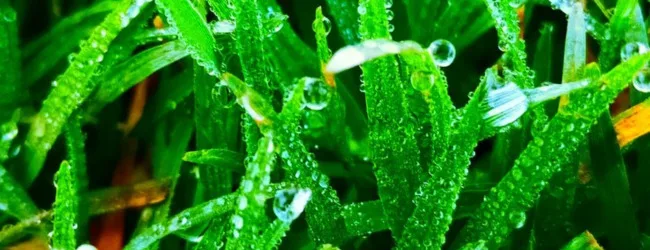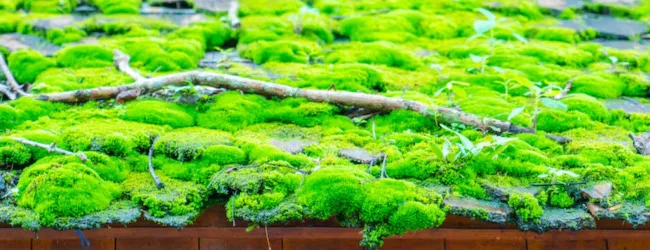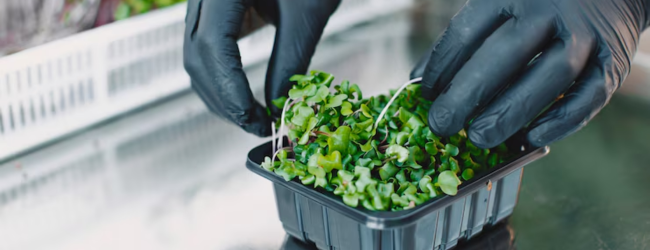Table of contents
- What is Spirulina?
- Why Cultivate Spirulina? The Growing Opportunity
- Spirulina Cultivation Techniques: From Ponds to Photobioreactors
- Investment Needed for Spirulina Cultivation
- Challenges in Spirulina Cultivation
- Tips for Successful Spirulina Cultivation
- Spirulina Cultivation in India: A Growing Landscape
- Scaling Up & Business Aspects
- Conclusion
- Frequently Asked Questions (FAQs)
The world is waking up to the immense potential of microalgae, and among them, Spirulina stands out as a nutritional powerhouse. Often called a ‘superfood’, this blue-green algae is packed with protein, vitamins, minerals, and antioxidants, making it a sought-after ingredient in the health food industry, animal feed, and even cosmetics. As global demand rises, Spirulina cultivation is emerging as a promising agribusiness, especially in regions with suitable climates like India.
But what exactly does it take to grow Spirulina? How much investment is needed? What are the common techniques, challenges, and tips for success? This comprehensive guide delves into everything you need to know about Spirulina cultivation.
What is Spirulina?
Spirulina isn’t technically seaweed or even true algae in the traditional sense, but rather a type of cyanobacteria. These microscopic organisms perform photosynthesis, converting sunlight, water, and nutrients into biomass. Spirulina platensis is the most commonly cultivated species. It thrives in alkaline (high pH), warm water, making it distinct from many other aquatic crops and somewhat resistant to contamination by other freshwater algae.
Why Cultivate Spirulina? The Growing Opportunity
The interest in Spirulina cultivation isn’t just hype; it’s driven by several compelling factors:
- Nutritional Value: Spirulina boasts an impressive nutritional profile. It can contain up to 60-70% protein by dry weight, often cited as a ‘complete protein’ source. It’s also rich in B vitamins, iron, gamma-linolenic acid (GLA), and the vibrant blue pigment phycocyanin, which is a powerful antioxidant.
- High Productivity: Compared to traditional crops, Spirulina can produce significantly more protein per unit area, especially in suitable climates. Its growth cycle is fast, often allowing for daily harvesting under optimal conditions.
- Sustainability: Spirulina cultivation requires less land and water than many conventional protein sources. It also absorbs carbon dioxide during photosynthesis, contributing to potentially lower carbon footprints.
- Market Demand: The market for Spirulina is expanding rapidly, fueled by the growing health and wellness trend, vegetarian and vegan diets, and its use in various industries.
- Versatility: Spirulina is sold in various forms: powder, tablets, flakes, and even used as a natural food colouring (due to phycocyanin).
- Potential for Profit: With relatively high market prices for quality Spirulina, successful cultivation operations can yield attractive returns on investment.
💡 Pro Tip: If you want to start a farming business but have too many doubts, connect with a farming business expert from Boss Wallah for guidance – https://bw1.in/1116
Spirulina Cultivation Techniques: From Ponds to Photobioreactors

There are two primary methods for cultivating Spirulina:
- Open Pond Systems: This is the most common and cost-effective method for large-scale commercial production.
- Closed Photobioreactor Systems (PBRs): More advanced and controlled, often used for higher-value products or research, but with higher initial and operating costs.
Let’s focus on the widely used Open Pond method:
Open Pond Cultivation Explained
Open ponds are typically shallow, artificial ponds designed to provide optimal conditions for Spirulina growth. The most common design is the Raceway Pond.
- Raceway Pond Design: These are elongated, oval-shaped ponds divided by baffles (partitions) that guide the water flow in a loop, resembling a racetrack. A paddle wheel at one end circulates the water, ensuring the Spirulina is kept in suspension and exposed to sunlight evenly.
- Optimal Growing Conditions:
- Temperature: Spirulina thrives in warm temperatures, ideally between 30 °C and 35 °c. Temperatures below 20 °C significantly slow growth, and below 15 °C, it can stop.
- pH Level: Spirulina requires alkaline water, typically with a pH between 8.5 and 11. This high pH helps prevent contamination from other microalgae that cannot tolerate such conditions.
- Light: Spirulina needs plenty of sunlight for photosynthesis. Pond depth is kept shallow (usually 15-30 cm) to ensure light penetrates the culture. However, too much intense sunlight can inhibit growth, so managing pond depth and culture density is crucial.
- Nutrients: Spirulina requires specific nutrients dissolved in the water, including nitrogen (usually from urea or nitrates), phosphorus (from phosphates), potassium, magnesium, sulfur, and trace elements. Sodium bicarbonate (NaHCO3) is essential for maintaining the high pH and providing a source of carbon dioxide.
- Cultivation Process Steps:
- Pond Preparation: Construct the raceway pond, typically lined with food-grade plastic liners (like HDPE or LDPE) to prevent leakage and contamination from the soil. Install the paddle wheel and plumbing.
- Water Filling & Preparation: Fill the pond with fresh water. Adjust the water chemistry by adding necessary nutrients and sodium bicarbonate to achieve the target pH and nutrient concentrations. Water quality is paramount – free from heavy metals, pesticides, and pathogens.
- Inoculation: Introduce a starter culture (inoculum) of pure Spirulina into the prepared pond water. This initial culture concentration is critical for a successful start.
- Growth & Monitoring: Operate the paddle wheel to keep the culture mixed. Monitor temperature, pH, nutrient levels, and cell density (biomass concentration) daily. Adjust nutrients and pH as needed. The culture will multiply rapidly under optimal conditions, turning the water dark green/blue-green.
- Harvesting: Once the culture reaches the desired density (typically 0.5-1.0 g/L), harvesting can begin. This is often done daily or multiple times a week by pumping the culture through a fine mesh filter cloth or a vibrating screen. Spirulina cells are larger than many contaminants, allowing for physical separation.
- Washing: The harvested biomass, a thick paste, is washed with clean water to remove residual growth medium and contaminants.
- Processing:
- Dewatering: Further dewatering using a filter press or centrifuge.
- Drying: This is a critical step for preserving the nutritional value and extending shelf life. Common methods include:
- Sun Drying: Simplest but risks nutrient loss and contamination. Requires hot, dry climate.
- Tray Drying: Drying in trays in controlled environments (ovens). Better quality than sun drying.
- Spray Drying: The preferred industrial method. A liquid slurry is sprayed into a hot chamber, rapidly drying the particles into a fine powder. Preserves nutritional quality best but requires significant investment.
- Packaging: The dried Spirulina (powder, flakes) is packaged in airtight containers to prevent moisture absorption and degradation.
Photobioreactor (PBR) Systems (Briefly)
PBRs use enclosed transparent tubes or bags to grow Spirulina.
- Advantages: Better control over environmental parameters (temperature, light, CO2), reduced risk of contamination, potentially higher yields in limited space.
- Disadvantages: Much higher initial cost, more complex to operate and scale, can suffer from fouling (algae sticking to surfaces).
Investment Needed for Spirulina Cultivation

The investment required varies significantly based on the scale of operation (small-scale vs. commercial), location, chosen technology, and infrastructure.
Key Investment Components:
- Land/Space: The area needed for ponds, processing unit, storage, and office. Costs vary hugely depending on location.
- Pond Construction: Excavation, civil work, and crucially, the pond lining (food-grade HDPE/LDPE liners are essential).
- Equipment:
- Paddle wheels or pumps for circulation.
- Harvesting equipment (filter cloth/screen, frame, or mechanical filter press).
- Washing equipment.
- Drying equipment (drying trays, ovens, or an expensive spray dryer).
- Pumps and plumbing.
- Basic laboratory equipment for monitoring (pH meter, microscope, spectrophotometer for density).
- Initial Culture (Inoculum): Sourcing pure, high-quality starter culture is vital.
- Nutrients & Chemicals: Initial stock of fertilisers, sodium bicarbonate, etc.
- Labour: Costs for construction, daily operations, harvesting, and processing.
- Electricity/Power: For pumps, paddle wheels, drying (if using mechanical methods), and lab equipment.
- Licensing & Permits: Necessary approvals from local authorities and food safety bodies (like FSSAI in India).
Investment Estimates (Highly Variable):
Providing exact figures is challenging due to market fluctuations and regional differences. However, purely for illustration, based on general estimates available in the public domain (and not a current market quote):
- A small-scale setup (e.g., a few hundred square meters of pond area) might require an initial investment ranging from a few lakhs to ₹10-20 lakhs in India, covering civil work, lining, basic equipment, and initial inputs.
- A medium to large-scale commercial farm (e.g., 1 acre or more) utilising more automated equipment like mechanical filter presses and potentially spray dryers would run into crores of rupees.
Return on Investment (ROI): Spirulina cultivation can offer a good ROI, but it depends heavily on yield, efficiency, market price, and operational costs. Successfully managing operational costs, especially labor and energy, is crucial for profitability.
Challenges in Spirulina Cultivation
While promising, Spirulina cultivation comes with its share of challenges:
- Contamination: This is arguably the biggest threat. Other algae, bacteria, fungi, and even zooplankton can compete with or prey on Spirulina, reducing yield or making the culture unusable. Maintaining high pH and strict hygiene are key defense mechanisms.
- Maintaining Optimal Conditions: Fluctuations in temperature (especially during seasonal changes), sunlight intensity, and nutrient levels require constant monitoring and adjustment.
- Pest & Disease Control: While less common than contamination, certain pests can affect open ponds.
- Harvesting Efficiency: Separating the microscopic Spirulina efficiently and cost-effectively from large volumes of water is technically demanding.
- Processing Quality: Drying needs to be done correctly to preserve nutritional value. Poor drying can lead to spoilage or loss of valuable compounds like phycocyanin.
- Market Access & Sales: Securing consistent buyers, especially for large volumes, can be a challenge for new producers. Quality and certification often play a big role here.
- Quality Control: Ensuring the final product is free from contaminants, heavy metals, and meets food safety standards (like FSSAI in India) is paramount for market acceptance.
- Weather Dependence: Open ponds are susceptible to extreme weather events like heavy rains (diluting culture, altering pH), storms (damaging infrastructure), or prolonged cloudy periods (reducing growth).
ALSO READ | Different Types of Farming: Chart, Meaning, Examples & Complete Guide
Tips for Successful Spirulina Cultivation

Overcoming challenges requires careful planning and execution. Here are some tips:
- Start Small & Learn: Before investing heavily, set up a small pilot project or test ponds. This allows you to gain practical experience, understand the local conditions, and troubleshoot issues on a smaller scale.
- Thorough Research & Training: Educate yourself extensively or hire experienced personnel. Understanding Spirulina biology, water chemistry, and process management is non-negotiable.
- Choose the Right Location: Select a site with ample sunlight, access to good quality water, a suitable climate (warm temperatures), and relatively stable weather patterns. Proximity to the target market can also reduce logistics costs.
- Implement Strict Hygiene Protocols: Cleanliness is critical to prevent contamination. Regularly clean ponds, equipment, and processing areas. Use clean water sources.
- Consistent Monitoring: Daily monitoring of pH, temperature, cell density, and visual inspection for contaminants are essential early warning system.
- Invest in Quality Equipment: While cost is a factor, reliable pumps, paddle wheels, and especially harvesting and drying equipment significantly impact efficiency and final product quality.
- Plan Your Market Strategy BEFORE Starting: Identify your potential buyers (health food companies, feed manufacturers, local markets) and understand their quality requirements and pricing.
- Focus on Quality Control: Implement rigorous testing throughout the process and on the final product to ensure it meets national and international standards. Certification (e.g., organic) can open up premium markets.
- Network: Connect with other Spirulina farmers, researchers, and industry experts to share knowledge and best practices.
Spirulina Cultivation in India: A Growing Landscape
India presents a highly favourable environment for Spirulina cultivation.
- Climate: Large parts of India experience warm temperatures and abundant sunlight for most of the year, ideal for open pond systems.
- Demand: The health and wellness market in India is booming, increasing domestic demand for natural supplements like Spirulina. There is also potential for export.
- Agricultural Base: India has a strong agricultural infrastructure and a large workforce, which can be adapted for Spirulina farming.
- Examples: States like Tamil Nadu, Maharashtra, Karnataka, and Andhra Pradesh have seen significant interest and some successful examples of Spirulina cultivation, ranging from small farmer collectives to larger commercial units. Organisations and institutions are also involved in promoting and researching spirulina.
- Support Systems: While perhaps not as widespread as for traditional crops, there is growing awareness and some support mechanisms available from government bodies, research institutions (like ICAR institutes with aquaculture divisions), and private companies involved in microalgae technology. Navigating FSSAI regulations is key for food-grade production.
Highlight: India’s abundant sunlight and growing health-conscious population make it a prime location for expanding Spirulina cultivation.
Scaling Up & Business Aspects

Moving from cultivation to a full-fledged business involves:
- Market Diversification: Don’t just target one market. Explore selling to health food manufacturers, poultry/fish feed producers, fertiliser companies, or cosmetic makers.
- Certification: Obtaining certifications like ISO 22000 (Food Safety Management) or organic certification (as per NPOP standards in India) can significantly enhance marketability and price.
- Value Addition: Instead of just selling raw powder, consider producing tablets, capsules, or blending Spirulina into other products.
- Branding & Packaging: High-quality, attractive packaging and a clear brand identity are crucial for consumer markets.
ALSO READ | AI-Powered Agri-Tech: Revolutionising Indian Farming with Smart Solution
Need Expert Guidance?
Starting a business can be challenging, but you don’t have to do it alone! At Boss Wallah, our 2,000+ business experts are ready to provide valuable insights and guidance. Whether you need help with marketing, finance, sourcing, or any other area of any business, our business experts are here to help you succeed- https://bw1.in/1116
Confused about Which Business to Start?
Want to start your own business but unsure which one to choose? Explore Boss Wallah, where you’ll find 500+ courses by successful business owners, featuring practical, step-by-step guides on starting and growing various businesses.
Find your perfect business idea today – https://bw1.in/1111
Conclusion
Spirulina cultivation offers a compelling opportunity for agribusiness, aligning with global trends in health, sustainability, and food security. While it demands careful planning, scientific understanding, and diligent management, particularly regarding contamination control and processing, the potential rewards are substantial.
For entrepreneurs and farmers in regions like India, blessed with favourable climates, venturing into Spirulina farming, starting perhaps on a modest scale, could prove to be a highly profitable and impactful endeavour. The journey requires dedication, continuous learning, and a commitment to quality, but the ‘green gold’ of Spirulina holds immense promise for the future.
Frequently Asked Questions (FAQs)
1. Is Spirulina cultivation profitable?
Yes, it can be highly profitable under optimal conditions and with efficient management. Profitability depends on yield, production costs, and market price, which vary based on quality and form (powder, tablets, organic, etc.).
2. How much space is needed to start Spirulina cultivation?
You can start small, even with a few tanks or small ponds (100−500m2 pond area) for learning and pilot projects. Commercial scale typically requires significantly more land, often 1 acre or more of pond area, plus space for processing and infrastructure.
3. What is the ideal climate for growing Spirulina?
Spirulina thrives in warm climates with consistent temperatures and abundant sunlight. Tropical and subtropical regions are ideal. It cannot tolerate freezing temperatures.
4. How long does it take to grow Spirulina?
Under optimal conditions, Spirulina grows very quickly. Once the culture is established, you can often begin harvesting small amounts daily or every few days. The biomass doubles roughly every 2-5 days, depending on conditions.
5. What kind of water is needed?
Clean, fresh water free from contaminants is essential. Saline water is not suitable for Spirulina platensis. The water is made alkaline and enriched with specific nutrients.
6. Can I grow Spirulina at home?
Yes, it’s possible to grow small quantities of Spirulina at home in tanks or containers with controlled temperature and lighting. However, maintaining the pure culture and required conditions can be challenging for beginners, and scaling up home production for commercial purposes is difficult.
7. What are the major challenges for beginners?
The most significant challenge is preventing and managing contamination by other microorganisms. Understanding water chemistry, nutrient management, and implementing strict hygiene are crucial for success.
8. Is any special equipment required?
Yes, essential equipment includes ponds/tanks, a paddle wheel or pump for circulation, a fine mesh filter or screen for harvesting, and equipment for drying (trays, ovens, or a spray dryer for commercial scale). Basic testing equipment (pH meter, thermometer) is also necessary.



1 comment
Thank you for sharing this informative article! It provided clear insights and was easy to understand. Looking forward to more valuable content.